Ago
12
Si la Tierra se enfada, nosotros a temblar.
 por Emilio Silvera ~
por Emilio Silvera ~
 Clasificado en Catástrofes Naturales ~
Clasificado en Catástrofes Naturales ~
 Comments (12)
Comments (12)
A boy wearing a protective mask, walks along an ash-covered street near San Carlos de Bariloche, Rio Negro, Argentina, on June 7 three days after the eruption of Chile’s Puyehue volcano. Dozens of South American flights had to be scrapped Tuesday because of the huge cloud of volcanic ash spewing from a Chile an volcano, as fears grew of possible landslides near the eruption. So far 4,000 people have been evacuated from 22 rural Chile an communities surrounding the Puyehue volcano, which rumbled to life on Saturday after showing no activity since 1960, when it erupted following a magnitude 9.5 earthquake.(Francisco Ramos Mejia/AFP/Getty Images) #
A helicopter flies over smoke and ash rising from the Puyehue-Cordon Caulle volcanic chain near Osorno city in south-central Chile June 5. A volcano dormant for decades erupted in the Puyehue-Cordon Caulle volcanic chain in south-central Chile on Saturday, belching an ash cloud more than 6 miles (10 km) high that blew over the Andes and carpeted a popular ski resort in neighboring Argentina. (Ivan Alvarado/Reuters) #
This NASA Earth Observatory natural-color satellite image obtained June 7, 2011 was captured by the Moderate Resolution Imaging Spectroradiomter on the Aqua satellite shortly after the eruption began on June. The brown ash plume reaches high above the clouds covering much of the scene, and casts a dark shadow towards the southeast. Along the leading edge of the plume, it appears heavier material is falling out of the ash cloud, while finer particles remain suspended in the atmosphere. (NASA) #
A cloud of ash billowing from Puyehue volcano near Osorno in southern Chile, 870 km south of Santiago June 5. Puyehue volcano erupted for the first time in half a century on June 4 prompting evacuations for 3,500 people as it sent a cloud of ash that reached Argentina. The National Service of Geology and Mining said the explosion that sparked the eruption also produced a column of gas 10 kilometers (six miles) high, hours after warning of strong seismic activity in the area. (Claudio Santana/AFP/Getty Images) #
People line up at Aerolineas Argentinas airline desk to reschedule their flights at the Jorge Newbery Airport, after their flights were cancelled due to an ash cloud that reached Buenos Aires from Chile’s Peyuhue volcano, grounding most air travel in Buenos Aires, Argentina, Tuesday June 7. (Natacha Pisarenko/Associated Press) #
A man takes pictures on a road covered with pumice rocks from Chile’s Puyehue-Cordon Caulle chain volcano near the Cardenal Samore border pass between Argentina and Chile June 6. The volcano in the Puyehue-Cordon Caulle chain, dormant for decades, erupted in south-central Chile on Saturday, belching ash over 6 miles (10 km) into the sky, as winds fanned it toward neighboring Argentina, and prompted the government to evacuate several thousand residents, authorities said. (Ivan Alvarado/Reuters) #
A pumice rock from Chile’s Puyehue-Cordon Caulle chain volcano is shown near the Cardenal Samore border pass between Argentina and Chile, June 6. The volcano in the Puyehue-Cordon Caulle chain, dormant for decades, erupted in south-central Chile on Saturday, belching ash over 6 miles (10 km) into the sky, as winds fanned it toward neighboring Argentina, and prompted the government to evacuate several thousand residents. (Ivan Alvarado/Reuters) #
Lightning flashes around the ash plume at above the Puyehue-Cordon Caulle volcano chain near Entrelagos June 5. The volcano in the Puyehue-Cordon Caulle chain, dormant for decades, erupted in south-central Chile on Saturday, belching ash over 6 miles (10 km) into the sky, as winds fanned it toward neighboring Argentina, and prompted the government to evacuate several thousand residents. (Carlos Gutierrez/Reuters) #
Volcanic lightning is seen over the Puyehue volcano, over 500 miles south of Santiago, Chile, Sunday June 5, 2011. Authorities have evacuated about 600 people in the nearby area. The volcano was calm on Sunday, one day after raining down ash and forcing thousands to flee, although the cloud of soot it had belched out still darkened skies as far away as Argentina. (Francisco Negroni/AgenciaUno/Associated Press) #
The Entre Lagos coast, near the Puyehue volcano, close to Osorno, 870 km south of Santiago on June 7. Dozens of South American flights had to be scrapped Tuesday because of the huge cloud of volcanic ash spewing from a Chilean volcano, as fears grew of possible landslides near the eruption. So far 4,000 people have been evacuated from 22 rural Chilean communities surrounding the Puyehue volcano, which rumbled to life on Saturday after showing no activity since 1960, when it erupted following a magnitude 9.5 earthquake. (Claudio Santana/AFP/Getty Images) #
Lightning strikes over the Puyehue volcano, over 500 miles south of Santiago, Chile, Monday June 6. Authorities have evacuated about 3,500 people in the nearby area. The volcano was calm on Monday, two days after raining down ash and forcing thousands to flee, although the cloud of soot it had belched out still darkened skies as far away as Argentina. (Claudio Santana/AFP/Getty Images) #
More links and information
Esperemos que las cosas estén solucionadas y las que no, que vuelvan pronto a su normalidad. Siempre serémos frágiles ante acontecimientos de la Naturaleza que no podemos dominar y, a veces, ni predecir para poder escapar de sus devastadores consecuencias.




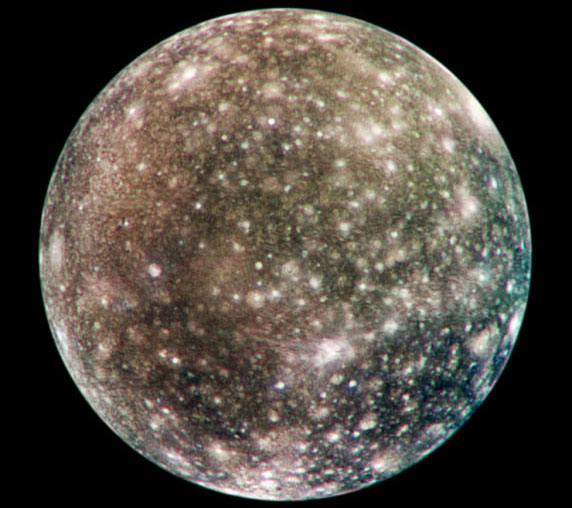











 Totales: 75.448.416
Totales: 75.448.416 Conectados: 54
Conectados: 54











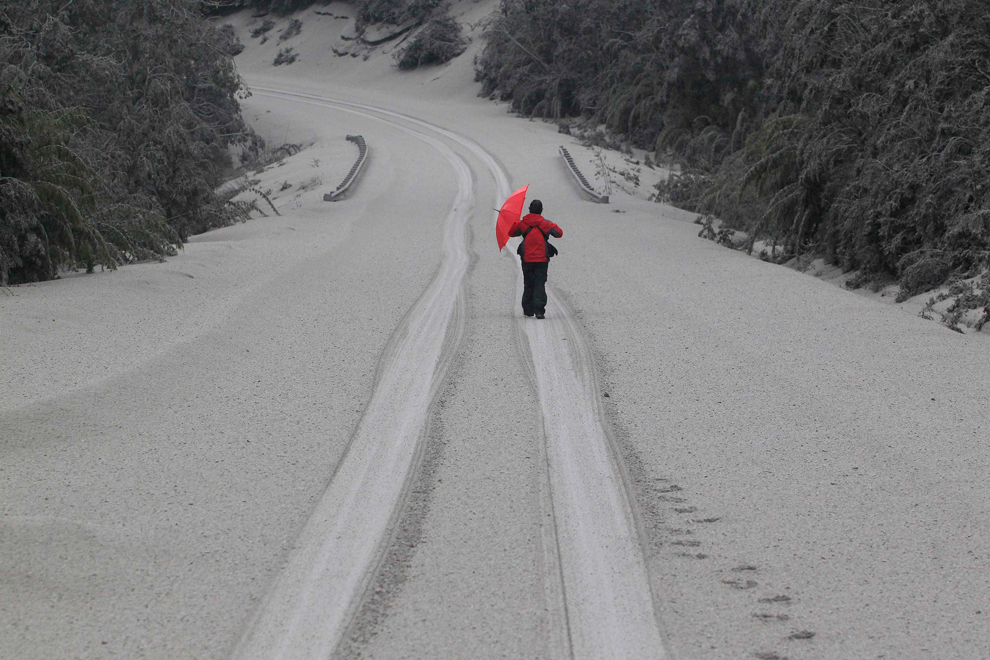
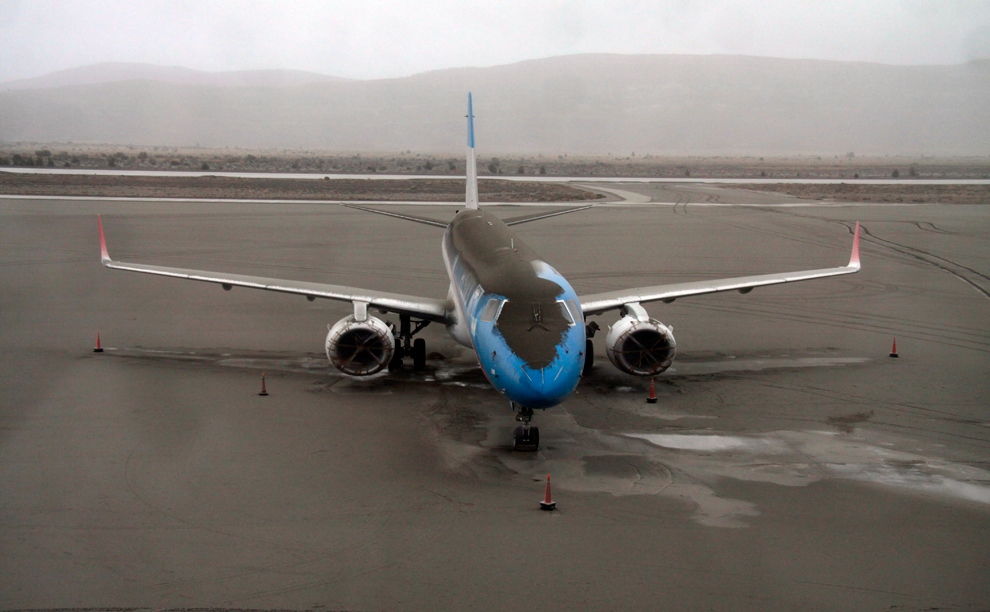

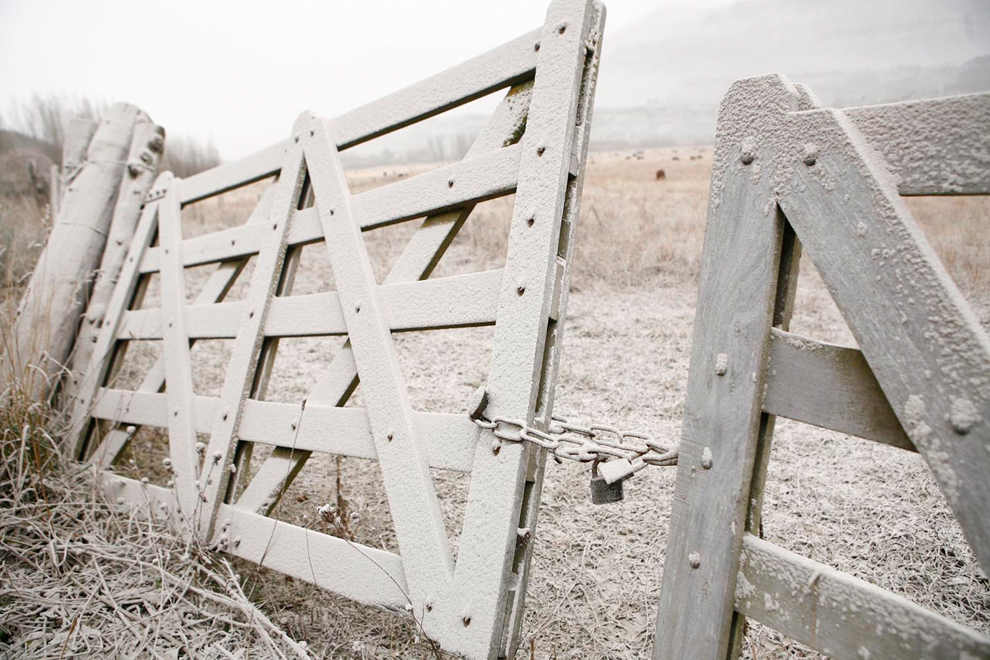


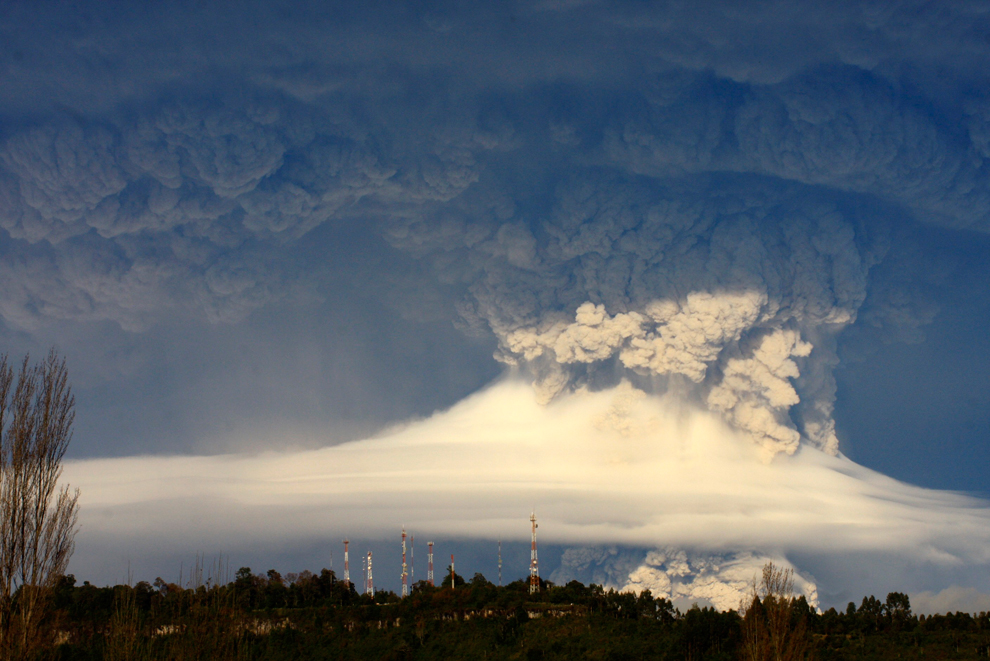

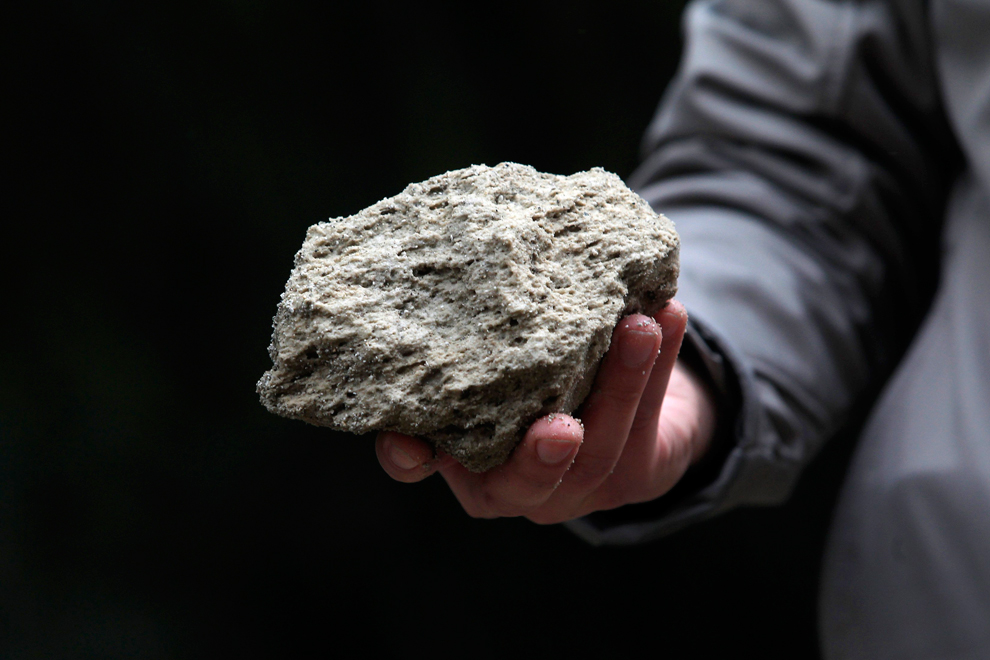
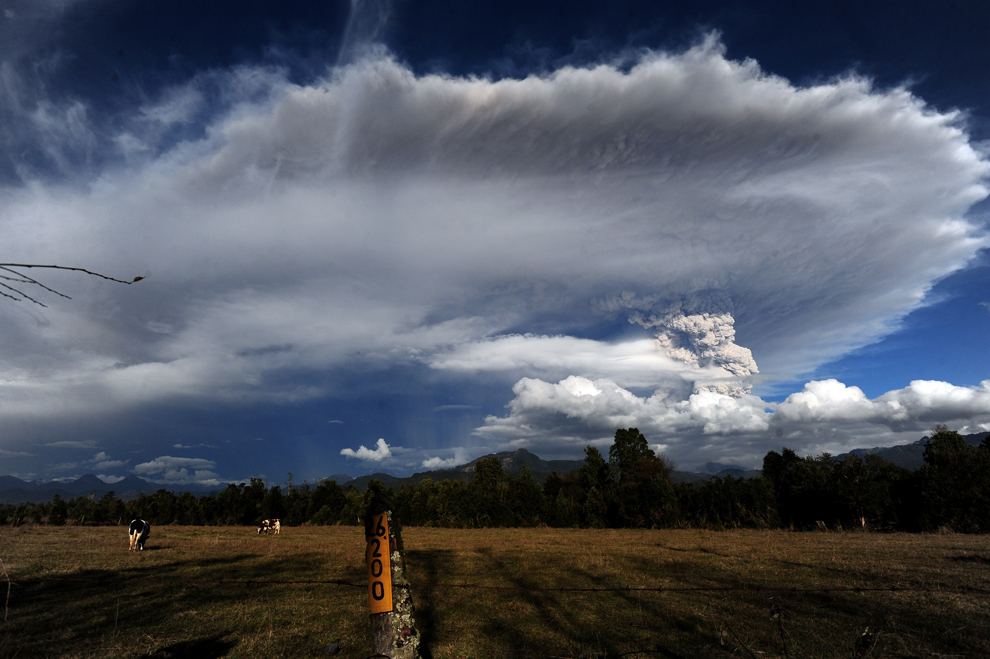
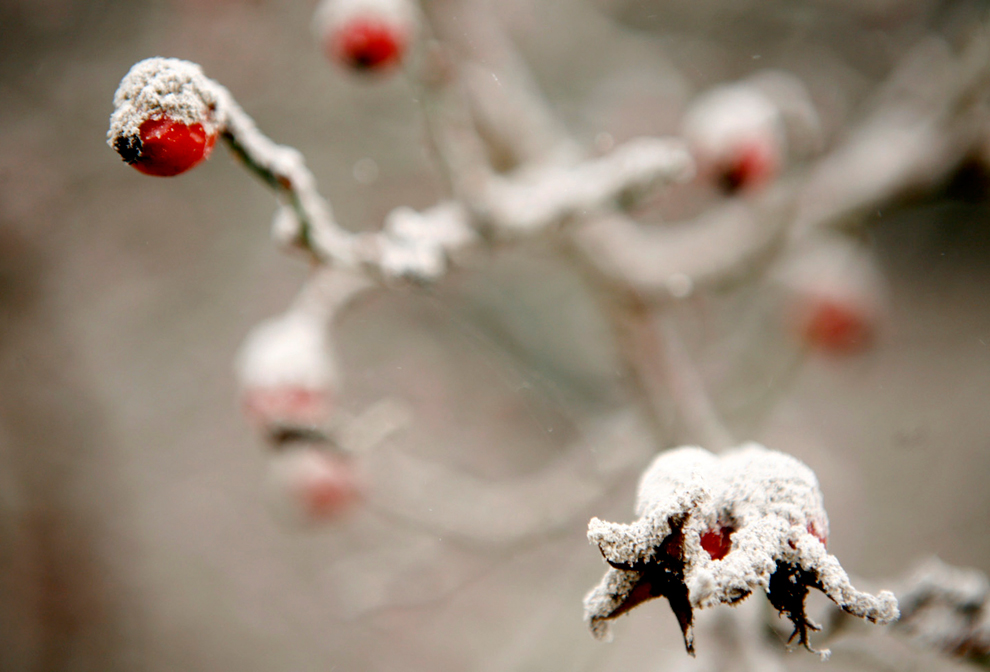
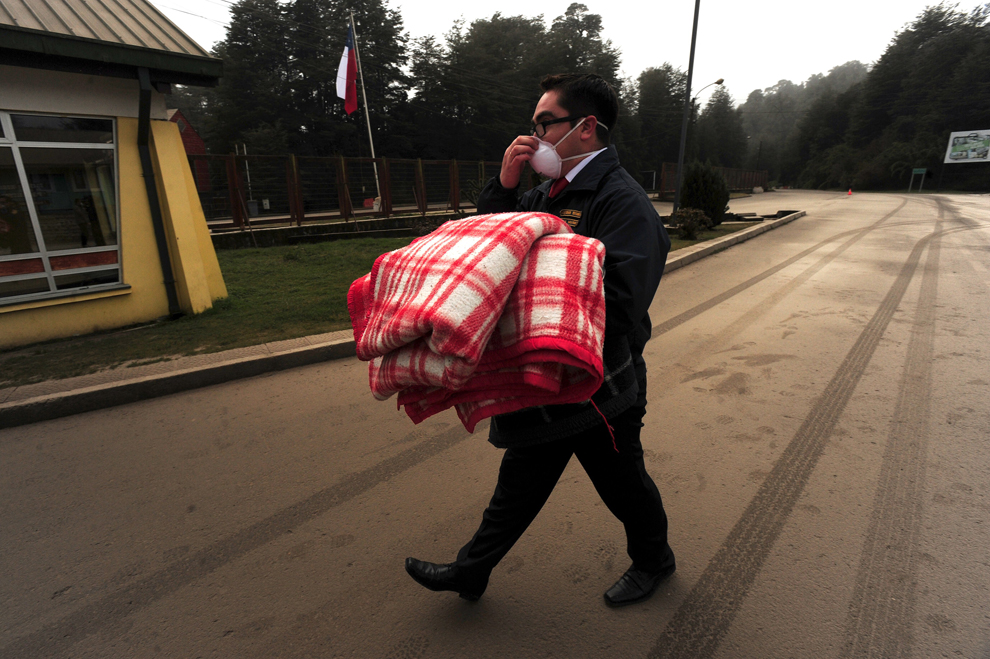
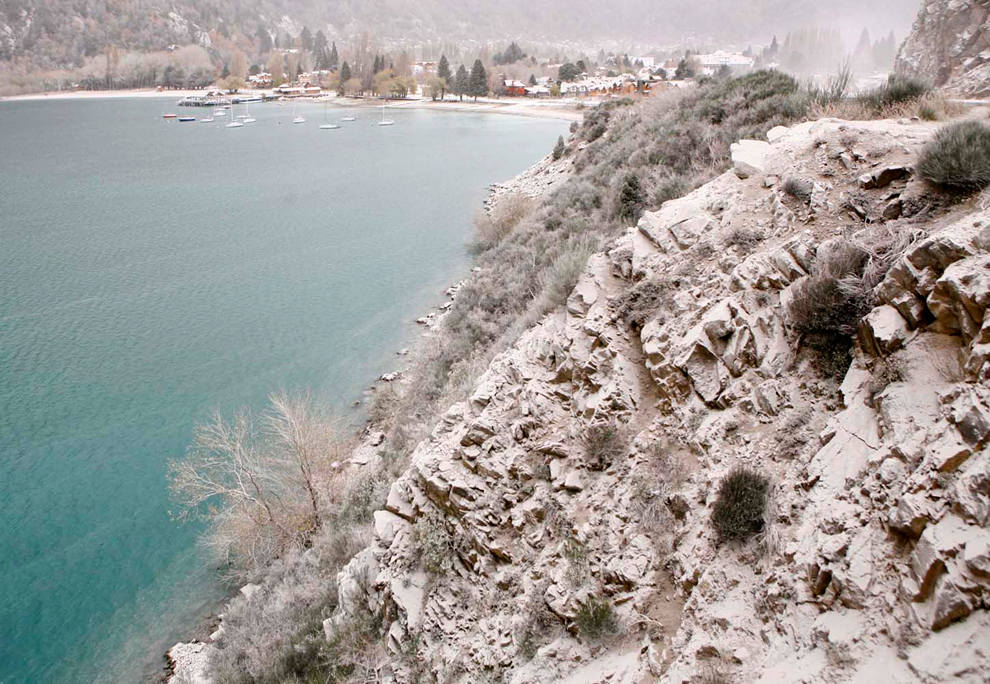
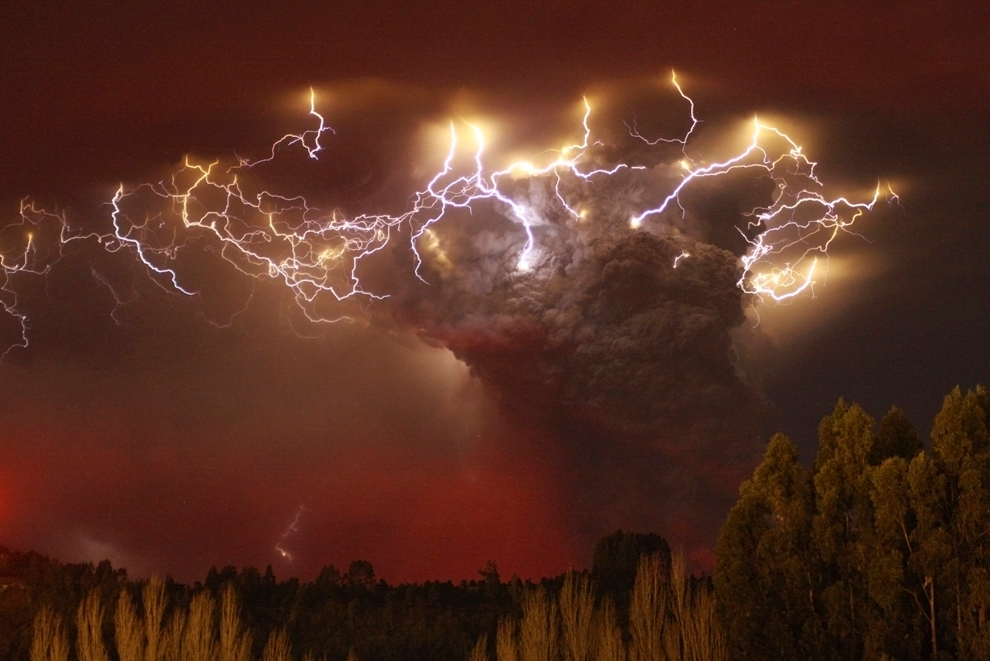
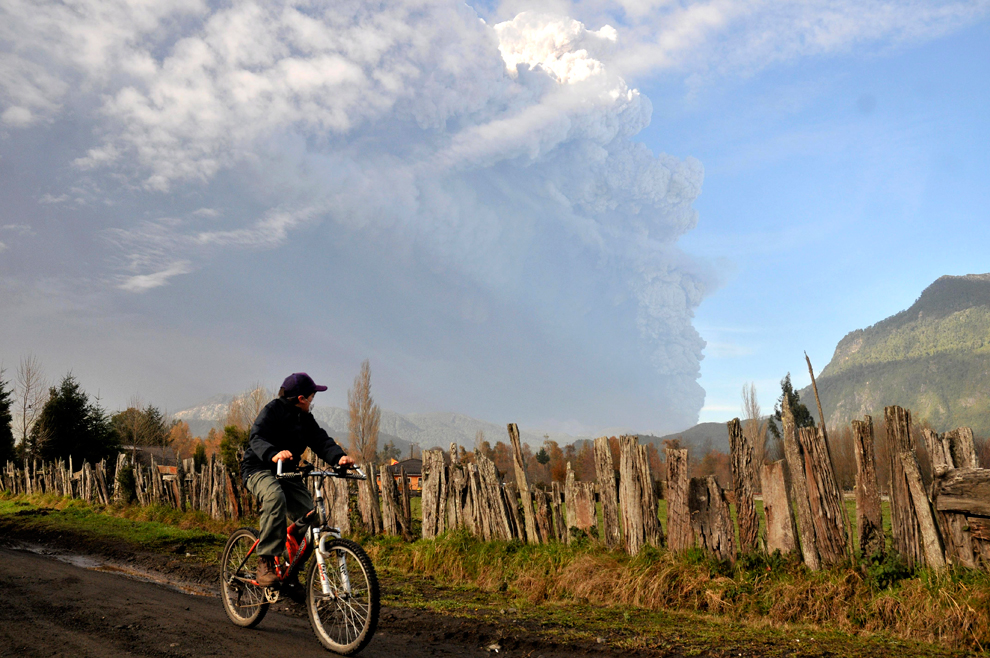
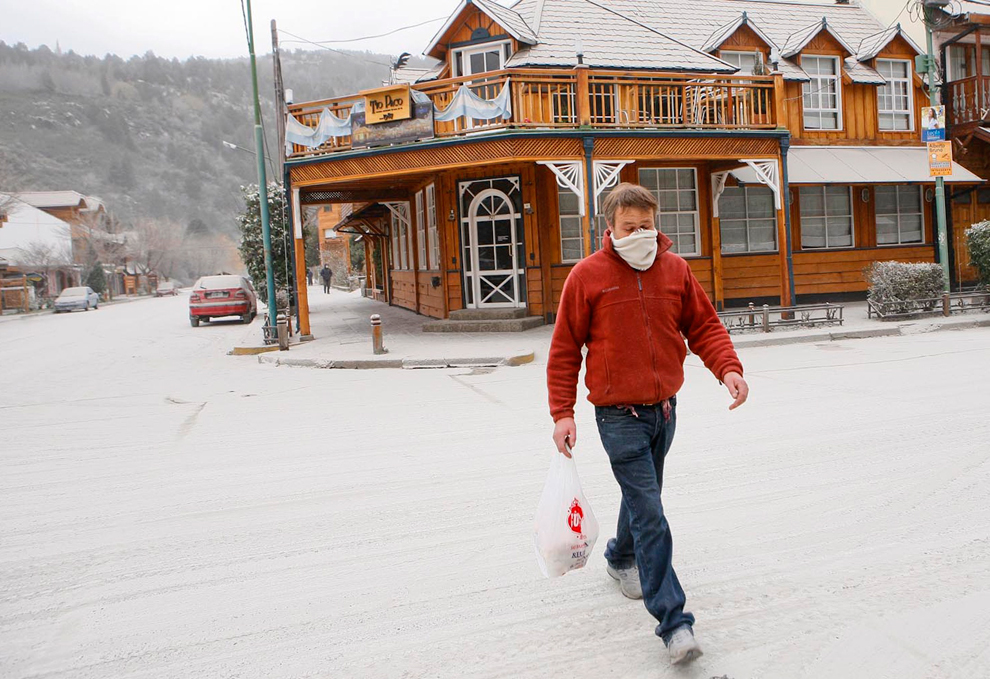

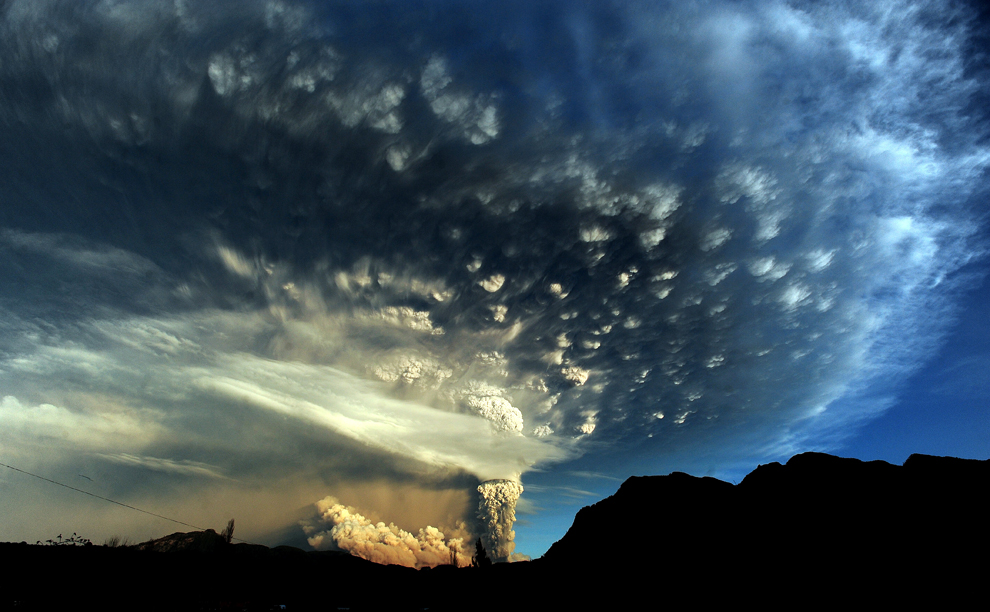
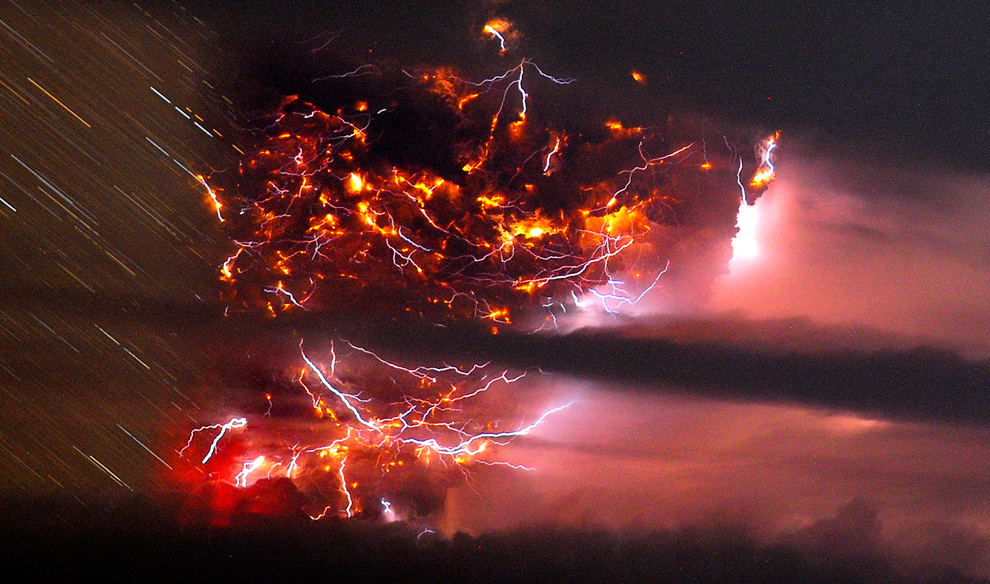
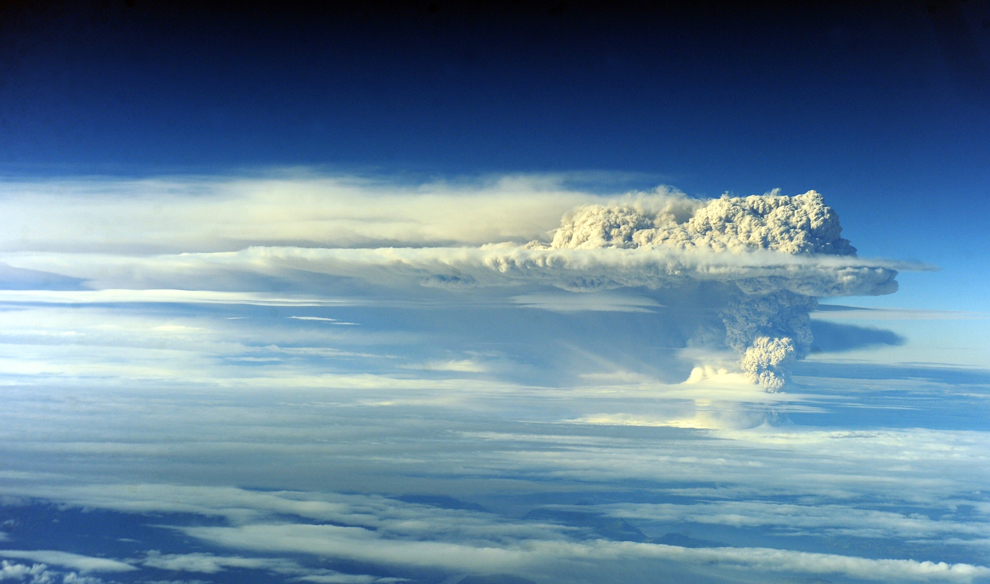
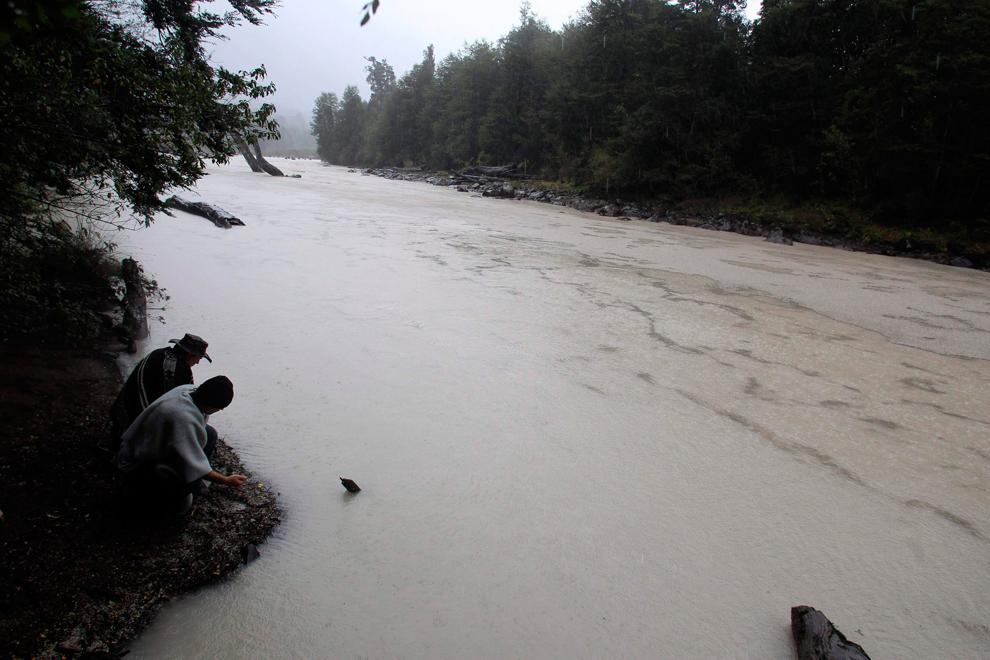
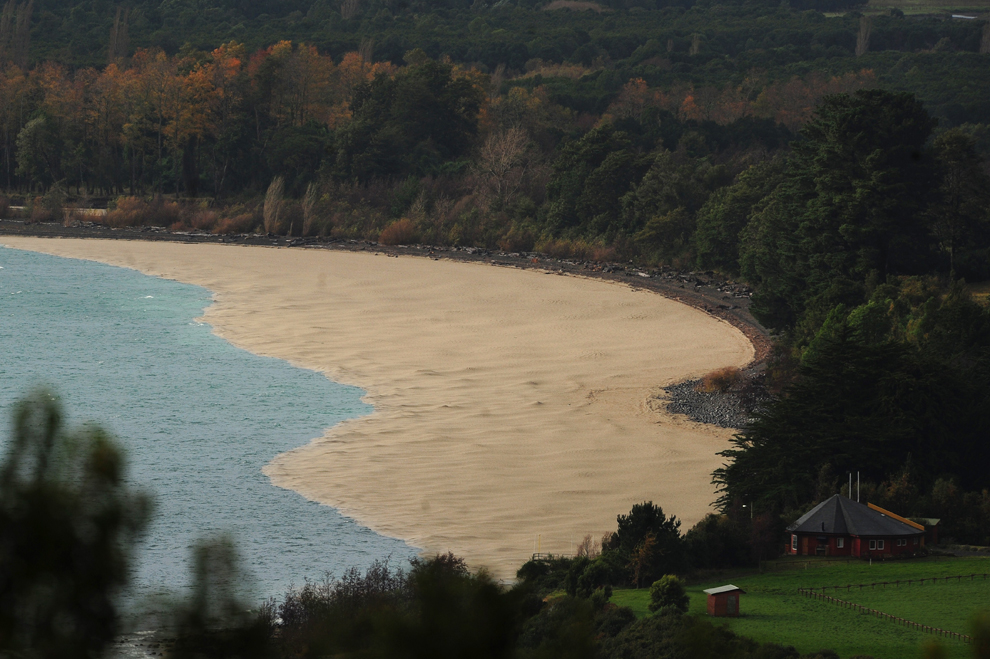
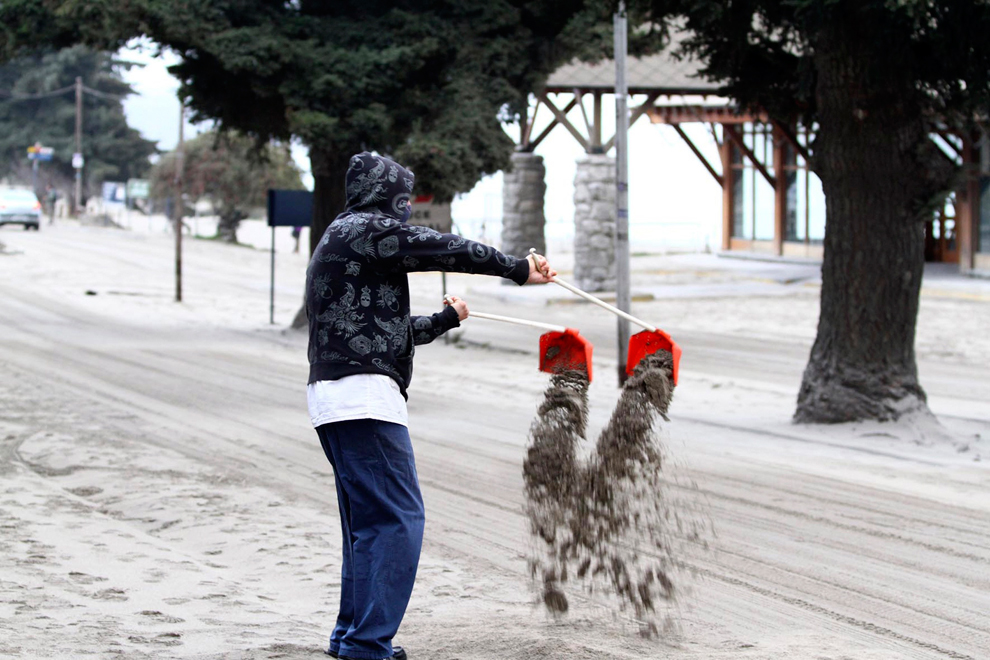
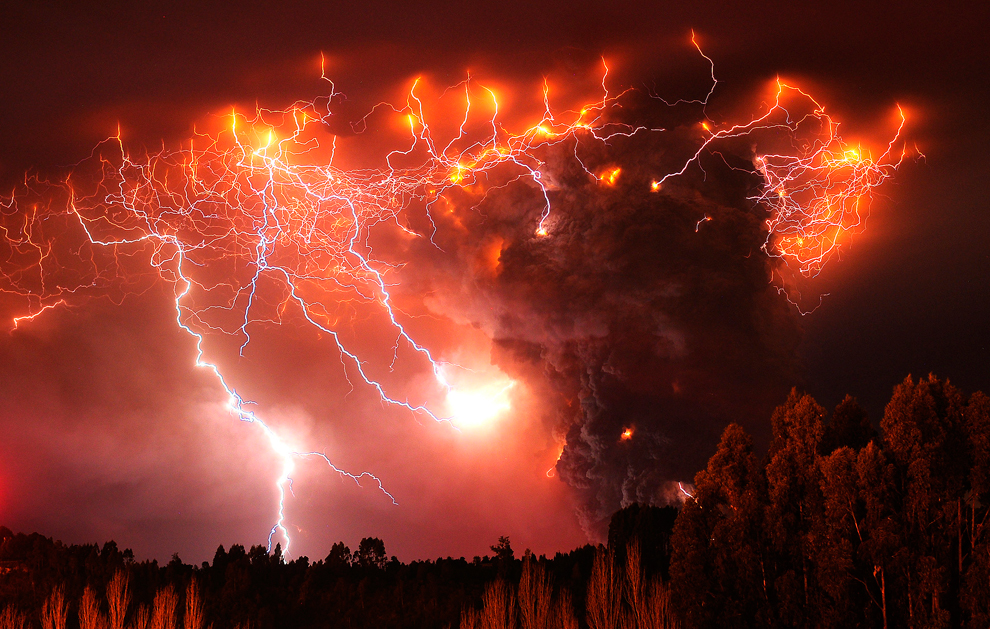




















el 9 de junio del 2011 a las 9:36
Es pues este nuestro planeta, la incubadora de vida, de paisajes y especies. Nuestro amado planeta. El que nos provee de todos los recursos necesarios para sobrevivir y a la vez desarrollarnos, protector de mortales rayos cósmicos, radiación, etc. Pedacito de tierra con agua, nuestro Edén.
¿QUE LE ESTAMOS HACIENDO???!!!!
La erupción no es directamente causa del humano. Pero otras catástrofes si. Se que se ha hablado mucho sobre la irresponsabilidad humana así que solo dire que no me gusta lo que le hacemos al planeta.
El titulo viene como anillo al dedo. Así como dependemos del Sol, dependemos de la Tierra y de varios factores mas para que pueda escribir este comentario. Mucho tiene que pasar. Esto es complejo y a la vez simple. Curioso ¿no?
Gracias al amigo Nelson que nos proporciona el enlace, donde muestran imágenes… bueno de muchas maneras se les puede llamar. Me gusta la imagen #27, trazos de estrellas y el volcan.
♫ ♪
el 9 de junio del 2011 a las 15:31
Hola muchachada.
Gracias por los conceptos, pero no hay nada que agradecer. Sólo comparto lo que encuentro y creo de interés, y que está disponible en Internet. Tal como hacen ustedes (en realidad bastante menos).
Sin duda, como dice el amigo Riesling, no tenemos la culpa de la erupción. Pero es un recordatorio más de lo que ya se ha dicho muchas veces, pero hay que repetir sin pausa: que el planeta continuará su evolución, con nosotros o sin nosotros. Que debemos sacudirnos el lastre de la soberbia, de creernos ajenos y superiores a la Naturaleza, de atentar contra ella, contra nuestra propia especie, contra la Vida.
Acá en Montevideo, el cielo está blanquecino, el Sol se vé a través de una especie de bruma homogénea, y se nota una tenue capa de ceniza en las baldosas exteriores. Esperemos que no pase a mayores. Los vuelos están suspendidos.
Una vez mi madre me contó que cuando era niña (era nacida en 1921), se cubrió la ciudad de cenizas muy finas y blancas, provenientes de un volcán chileno; la gente la recogía pues parece que era un excelente pulidor.
Saludos cordiales para tod@s.
el 10 de junio del 2011 a las 7:51
Que todo vaya bien y que no tengasmos que lamentart incidente alguno.
Un abrazo amigo.
el 4 de marzo del 2012 a las 1:41
Saludos Emilio, Nelson, Riesling desde Mèxico D.F.
Me ha llamado la atenciòn (y a propôsito de si la “Tierra se enfada”) que han subido videos en donde se ha escuchado un zumbido al que han llamado “hum” por varias partes del mundo (adjunto un enlace de you tube), mi pregunta es, si tienen algûn enlace de algùn sitio serio en el que expliquen este fenòmeno o es simplemente una vacilada de los que graban estos.
http://www.youtube.com/watch?v=seTJ_VDLdOg
Gracias de antemano
Atentamente
Ricardo Cruz (antes Gèminis)
el 4 de marzo del 2012 a las 10:23
Hola, amigo Ricardo:
No deben preocuparte esos ruidos que, al menos de moemnto, no han sido denunciados por ninfuna Entidad de prestigio ni Acadénico ni Científico. ¿No crees que si esos “ruidos extraños y misteriosos”, fueran de procedencia desconocida no habrían sido ya cercados por los Organismos científicos del planeta? y, por otra parte, tendríamos que saber si, esos “ruidos” en verdad son, o, simplemente se trata de un montaje vaya usted a saber con qué propósito.
Lo cierto es que, en fuentes científicas nada saben de este fenómeno que provoca ruidos venidos de ¿ultratumba” quizás, o, del espacio exterior, o, del centro de la Tierra, o, de la Mente de un trasnochado?
En cuetiones como estas hay que estar alerta para ver que se dice en los aledaños de la Ciencia, y, lo que se digan en otras fuentes (como parece el caso), tiene un valor relativo o anecdótico. Lo pridente es esperar.
Un saludo cordial.
el 9 de septiembre del 2012 a las 11:04
hello there and thank you for your info I have certainly picked up anything new
from right here. I did however expertise several technical issues using this site, since I experienced to reload
the web site many times previous to I could get it to load correctly.
I had been wondering if your hosting is OK? Not that I’m complaining, but slow loading instances times will often affect your placement in google and can damage your high-quality score if advertising and marketing with Adwords. Well I am adding this RSS to my email and can look out for much more of your respective intriguing content. Make sure you update this again very soon.
el 9 de septiembre del 2012 a las 17:58
Gracias amigo por el aviso, se lo paso al Administrador que sabrá que hacer.
Un saludo cordial.
el 6 de noviembre del 2012 a las 3:47
Can I just say what a comfort to uncover somebody who truly understands what they are talking about over the internet. You certainly know how to bring a problem to light and make it important. A lot more people have to check this out and understand this side of your story. I was surprised that you are not more popular since you certainly have the gift.
el 4 de enero del 2013 a las 3:47
Ahora respiro algo mejor.
De todas las maneras, hay mucha gente que sabe de qué habla en Internet que, aunque sea un lugar masificado y no siempre aleccionador, como en Botica… Suele haber de todo.
En lo referente a la popularidad, como esta es efímera y no siempre de la mejor calidad, vayamos poco a poco y sin prisas que…, como decía aquel viejo del campo que no tenía estudios pero sí mucha experiencia y, a su manera filosofaba: “Un hombre, no es un palomo que se cria en un verano”. Cada cosa requiere de su tiempo.
Un saludo cordial a quien sea que pusiera el mensaje.
el 3 de enero del 2013 a las 14:02
Write more, thats all I have to say. Literally, it seems as though you relied on the video to
make your point. You clearly know what youre talking about, why throw away your intelligence on just posting videos to
your weblog when you could be giving us something informative to
read?
el 6 de febrero del 2013 a las 0:51
Hi, i feel that i noticed you visited my blog thus i got here to return the desire?
.I am trying to to find issues to enhance my site!I guess its good enough
to use some of your concepts!!
My website; fastcashadvancepaydayloans.com
el 6 de febrero del 2013 a las 2:23
Sí, amigo, visité tu Blog y te dejé el mensaje que la ocasión requería.
No dudes en utilizr cuanto quieras de este Blog, lo único que tienes que hacer es dejar clara la procedencia.
No desmayes y continúa. Ya sabes: ¡Andando se hace camino!
Saludos.